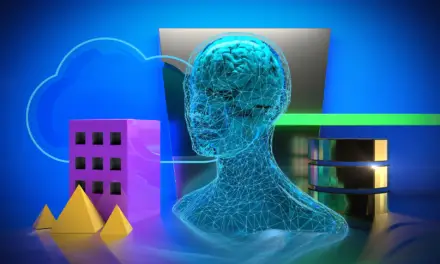In a digital world awash with data, where algorithms calculate our desires before we even know them, an evocative question emerges: Can Artificial Intelligence (AI) itself ask questions?
As the architects of machine learning models, humans have long been the inquisitors, the ones seeking answers from obedient algorithms. Yet, in a landscape where AI now composes poetry, beats humans at complex games, and even assists in medical diagnosis, the prospect of AI asking questions could signify a tectonic shift in the power dynamics of knowledge.
Are we on the cusp of an era where algorithms evolve from mere problem solvers to entities capable of learning to learn and intellectual curiosity?
In this article, we will look deeper into the complexities of a world where AI doesn’t just answer our questions but begins to ask its own.

Table of Contents
Can Artificial Intelligence Ask Questions?
Yes, AI can ask questions, but it’s probably not what you think. AI formulating questions isn’t the same as human curiosity or inquiry. Machine learning models can generate queries for data extraction or classification, often within a set framework. Some advanced NLP models may pose questions to clarify tasks. However, this is guided by algorithmic logic, not by a thirst for understanding or consciousness.
The Mechanics of Question-Asking in AI: Current Capabilities and Limitations
As we venture into the current state of AI’s question-asking abilities, it’s important to be able to peel back the curtain and glimpse the technical wizardry that enables this function. At its core, AI’s capability to generate questions largely hinges on machine learning algorithms, particularly those based on neural networks.
How It Works Technically
Let’s take natural language processing (NLP) models as an example. These are trained on massive datasets of human text to understand and mimic human language. The model identifies patterns in the data and can then generate questions based on the context it’s given. For instance, if fed information about climate change, an advanced NLP model could ask, “What are the main contributors to global warming?”
Other algorithms, especially in the area of data analytics, use queries to sift through vast datasets. These aren’t questions in the conversational sense but are closer to interrogative commands that help the algorithm sort and filter information effectively.
The Algorithmic Backbone
Algorithms act as the decision-making blueprints for AI, laying out step-by-step instructions for how to process data and generate outputs, which in our case, are questions. Algorithms like decision trees, Bayesian classifiers, and support vector machines have all been used to facilitate question-asking in various AI applications.
For example, a decision tree might be used in a customer service bot to determine what questions to ask a user based on their responses. The algorithm maps out various paths of inquiry, essentially pre-programming the range and type of questions the AI can ask to troubleshoot a problem effectively.
The Neural Network Nerve Center
Neural networks take this a step further by mimicking the structure of the human brain, consisting of layers of interconnected nodes—or “neurons”—that transmit and process information. In the area of NLP, recurrent neural networks (RNNs) and transformers have revolutionized the AI’s capability to deal with language.
These networks excel at recognizing complex patterns in text data, allowing for more nuanced and contextually appropriate questions. While traditional algorithms are confined to a set decision-making process, neural networks can adapt and “learn,” refining their question-generating capabilities as they’re exposed to more data.
However, this learning is still a function of the data and the objectives set by human operators, not a sign of emerging curiosity or consciousness.
Both algorithms and neural networks come with their own sets of constraints and possibilities. While algorithms are generally easier to interpret and debug, they’re often rigid and limited in their capacity to handle ambiguous or unstructured data.
Neural networks, on the other hand, offer more flexibility and can deal with complex patterns but are often termed “black boxes” because it’s challenging to understand precisely how they arrive at specific outputs, including questions.
These technical intricacies underline the gap between AI’s mechanical questioning and the organic, deeply contextual nature of human inquiry (our imagination).
Limitations
While the feats AI uses to ask questions are technically impressive, they fall short of the rich tapestry of human inquiry in several ways.
Lack of Contextual Understanding
AI doesn’t ‘understand’ the questions it asks; it generates them based on patterns and probabilities. It doesn’t know why a question might be philosophically profound or socially significant.
No Emotional Nuance
Human questions often come loaded with emotional undertones—a tone of urgency, curiosity, or even despair. AI can’t grasp or replicate this emotional layer.
Fixed Parameters
The questions AI can ask are often bound by the framework it’s been programmed within. It can’t go ‘off-script’ or ‘out of the box’ to ask a question that hasn’t been anticipated by its programming.
Absence of Curiosity
Perhaps most importantly, AI doesn’t ask questions because it wants to know the answer. It asks them to complete a task or fulfil an objective set by human operators.
So, even though AI can technically ‘ask’ questions, it’s like comparing a paint-by-numbers piece to a Van Gogh. Both may depict a sunflower, but one is a mechanical reproduction, while the other is imbued with layers of meaning and emotional depth.
As it stands, AI may be able to mimic the form of our questions, but it lacks the substance, the soul if you will, that drives human inquiry.
The Art of Inquiry: Human Curiosity vs. Machine Computation
Throughout history, the importance of asking questions has been at the forefront of human advancement. Take Galileo, for example, whose queries about the heavens defied the accepted geocentric model, paving the way for modern astronomy. Or consider the tireless inquiries of Marie Curie, whose questions about radioactivity opened new avenues in physics and medicine.
These individuals spent years—even decades— consuming information, developing their theories, experimenting, and asking questions to further their pursuits.
In philosophy, questions often become lifelong pursuits. Philosophers like Immanuel Kant asked fundamental questions about human morality and the nature of reality, spending years developing intricate systems of thought. The academic cycle is slow but profound; peer reviews, scholarly debates, and constant refinement of theories are the hallmarks of this deeply human endeavor.
Now, contrast this with the world of AI. A machine learning model can be trained on the sum total of human scientific and philosophical knowledge in a matter of days, if not hours.
For instance, GPT-4, one of the most advanced language models, can process text from an array of disciplines to answer a question in milliseconds. It can simulate dialogue with Kant, offer an analysis of Galileo’s work, or summarize Curie’s findings, all with a speed that no human scholar could match.
But here’s where the difference is most striking. AI does this without a conceptual understanding of the information it processes. It doesn’t “wonder” why Kant’s categorical imperative is important or what implications Curie’s work has for modern medicine.
While a neural network like AlphaGo can defeat the world champion in Go, it doesn’t ponder the beauty of the game or question the strategies it employs. It solves problems and answers questions based on patterns in the data it has been fed, not because it “wants” to know more.
Even in instances where AI appears to be asking questions—such as data sorting algorithms that query databases—it’s a purely functional act, devoid of curiosity. These questions are predetermined by human programmers to fulfill specific tasks, like filtering out irrelevant information.
So, as we examine the cross-section of algorithms and thought, it’s worth contemplating the essence of questioning. Human questions arise from a combination of curiosity, a lack of understanding, and a desire to know more. In the area of AI, the absence of these qualities means that while machines can answer questions with unparalleled speed and accuracy, they’re not the ones setting the intellectual agenda—at least not yet.
And if they ever do, it’ll be a game-changer in our understanding of intelligence, fundamentally redefining the landscape of inquiry and discovery.
Related Article: 124 Awesome Uses for Your Smartphone
What Would it Take for AI to Truly Be Able to Ask Questions Like a Human
At the speed at which AI is changing the world we live in, it’s worth contemplating what advancements would be necessary for AI to evolve from mere query generators to genuine intellectual interlocutors.
For AI to ask questions like a human—imbued with curiosity, contextual understanding, and perhaps even self-awareness—several groundbreaking developments would likely need to occur.
Toward a Conceptual Understanding
Firstly, the AI would need to shift from pattern recognition to conceptual understanding. Current AI models can’t differentiate between significant and trivial information; they merely replicate what they’ve been trained on.
Advancements in symbolic reasoning, where AI not only recognizes data but understands its inherent meaning, would be a monumental leap. This could make AI’s questions contextually appropriate and emotionally nuanced, coming closer to human-like inquiry.
Emotional and Social Intelligence
Emotional intelligence is another domain where AI would need to make strides. Current models lack an understanding of emotional undertones or the social dynamics that often accompany human questioning. Innovations in affective computing, where algorithms could understand and interpret human emotions, might enable AI to ask questions that resonate on an emotional level.
Self-Modification and Learning
For an AI to truly emulate human questioning, it would likely need the ability to modify its own algorithms, learning not just from external data but from its own processes and “experiences.” This would require a significant leap in unsupervised learning techniques and perhaps even the advent of a new paradigm in machine learning.
The Question of Consciousness
The ultimate hurdle, however, would be self-awareness. The moment AI begins to ask questions for its own sake, motivated by its own “desire” to know, we would cross into the realm of machine consciousness.
While this is purely speculative and perhaps veering into the territory of science fiction, it’s a philosophical conundrum that researchers in AI ethics are beginning to consider seriously.
In conclusion, while the steps required for AI to genuinely ask questions like a human are monumental, they’re not entirely beyond the realm of possibility.
Each hurdle—conceptual understanding, emotional intelligence, self-modification, and potentially even consciousness—represents a frontier in our understanding of both intelligence and the nature of inquiry itself.
As AI continues to evolve, it will invariably reshape the intellectual landscape, challenging us to redefine what it means to question, to know, and ultimately, to be.



